Police in Paris fired water cannon and tear gas to repel gilets jaunes (yellow vest) demonstrators from around the Arc de Triomphe monument on Saturday.
This is the ninth straight weekend of protests against French president Emmanuel Macron’s economic policies. Thousands of protesters also marched noisily but peacefully through the Grands Boulevards shopping area in northern Paris. This is close to where a gas explosion in a bakery killed three people, including two firefighters, and injured nearly 50 early on Saturday.
The centre city was in lockdown against another feared eruption of violence by radical elements in the gilets jaunes movement. Bridges across the Seine river closed and official buildings such as parliament and the Elysee presidential palace are protected by police barriers.
Groups of protesters also gathered on and around Paris’s famous Champs Elysees boulevard, the scene of disturbances in recent weeks, many of them calling loudly for Mr Macron’s resignation.
“Macron, we are going to tear down your place!” read one banner.
Around the 19th-century Arc de Triomphe at the top of the Champs Elysee, riot police unleashed water cannon and tear gas at protesters after being pelted with stones and paint, said witnesses.
By mid-afternoon there had been no major clashes with police unlike in previous weeks. In Paris more than 50 people were arrested, some for carrying objects that could be used as weapons.
There were also thousands of marches in the cities of Bordeaux and Toulon in southern France as well as Strasbourg in the east and the central city of Bourges.
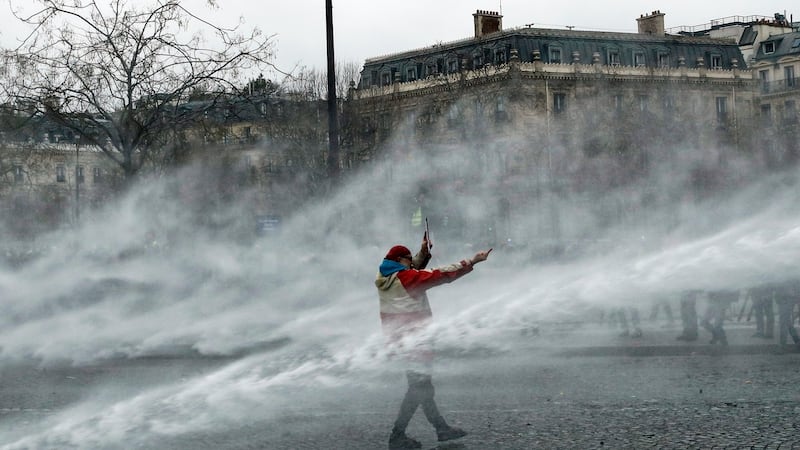
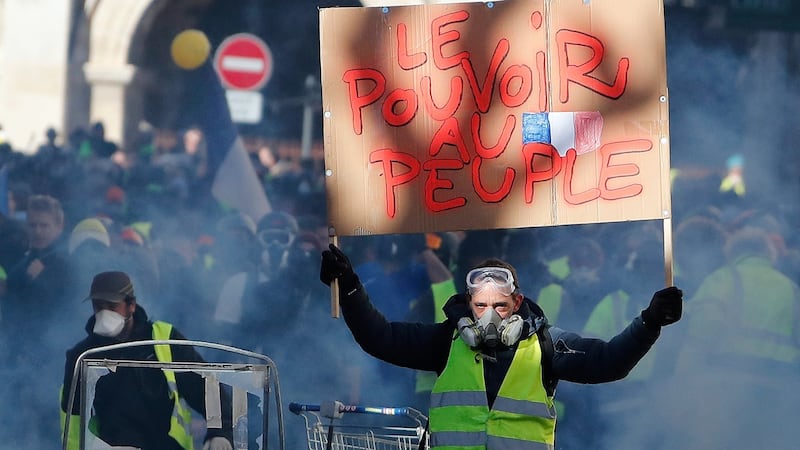
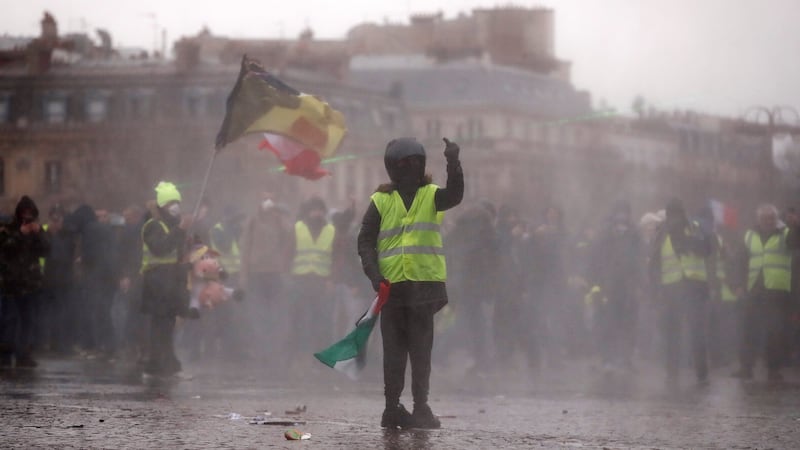
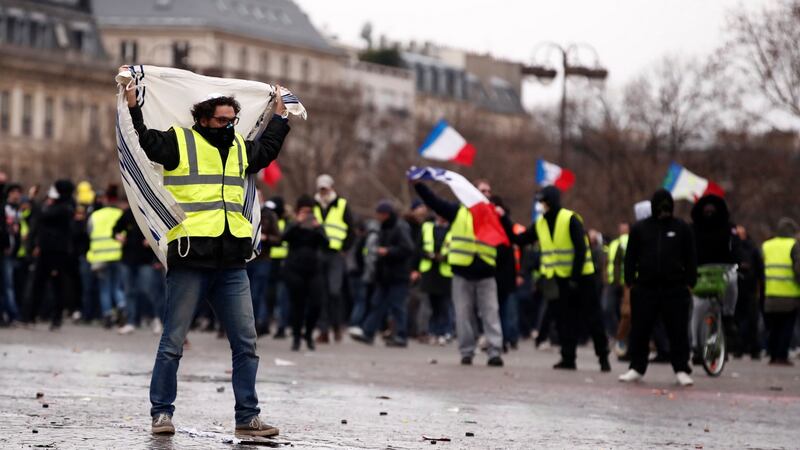
Bourges authorities said nearly 5,000 gilets jaunes stuck to the designated demonstration area. But another 500 had pushed into the city centre that was off limits for demonstrators.
Many businesses in Bourges had been boarded up up to avoid damage from protesters. And authorities had removed street furniture and building site materials that could be used for barricades.
In Strasbourg, up to 2,000 demonstrators gathered in front of the European Parliament building and later marched to the centre of the city on the Rhine river border with Germany. Protesters set garbage bins ablaze and police fired tear gas grenades, but no serious violence or looting was reported.
More than 80,000 police were on duty for the protests nationwide, including 5,000 in Paris.
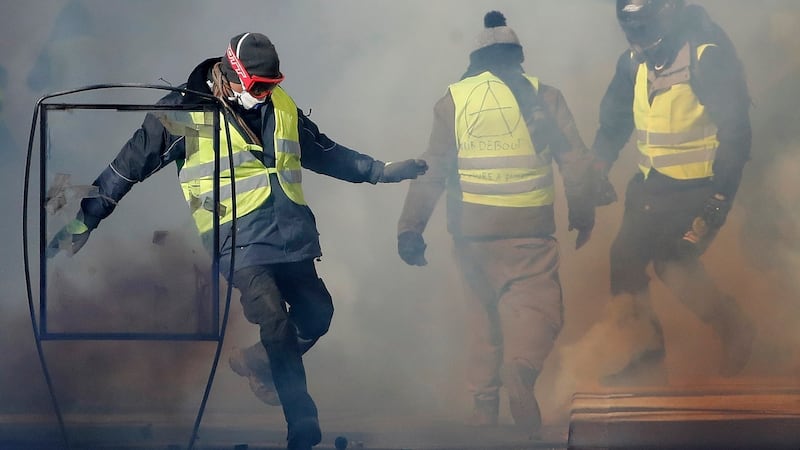
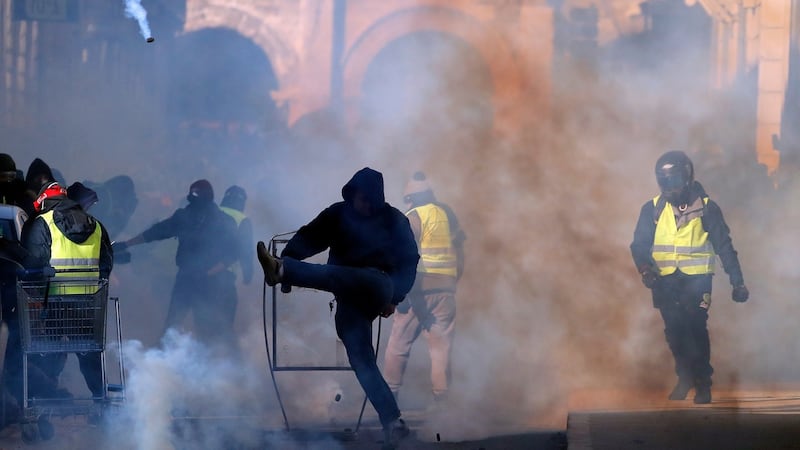
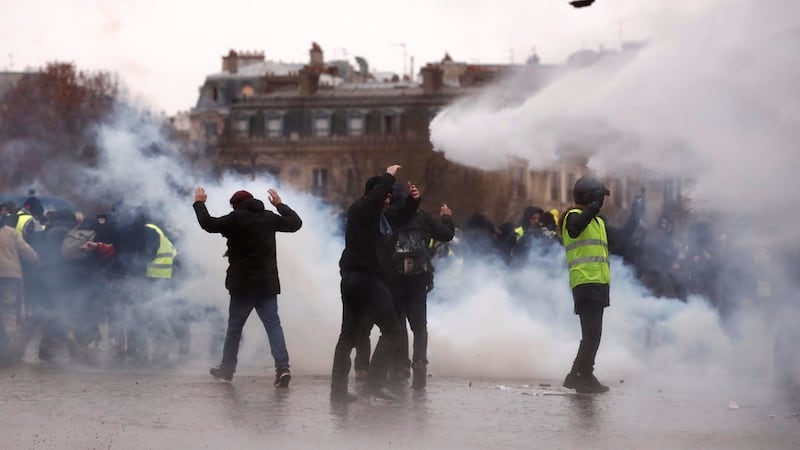
The gilets jaunes take their name from the high-visibility jackets they wear at road barricades and on the street. Their rage stems from a squeeze on household incomes and a belief that Mr Macron, a former investment banker regarded as close to big business, is indifferent to their hardships.
Mr Macron, often criticised for a monarchical manner, is to launch a national debate on January 15th in an attempt to mollify the gilets jaunes, whose unrest has shaken his administration.
The debate, to be held on the internet and in town halls, will focus on four themes: taxes, green energy, institutional reform and citizenship. But aides to Mr Macron have said changing the course of his economic changes aimed will be off limits. – Reuters













